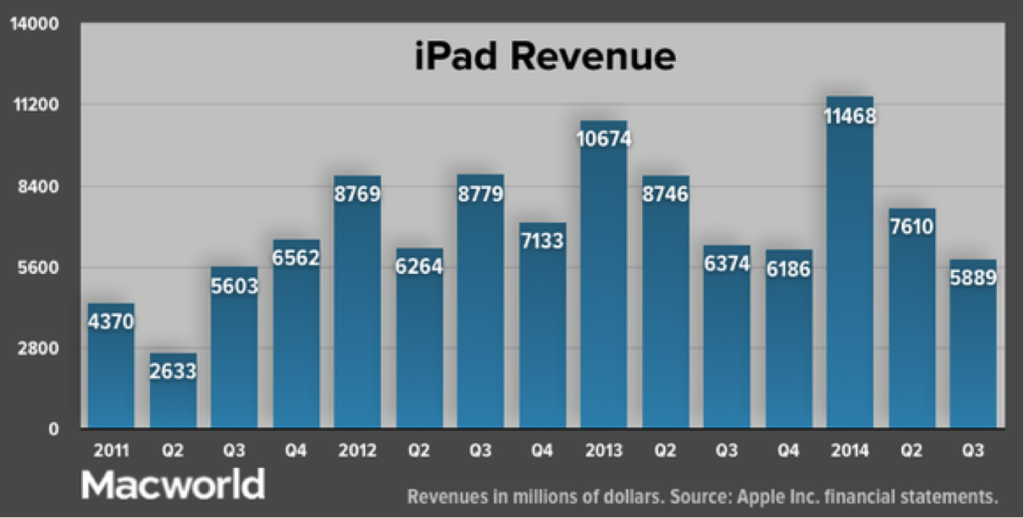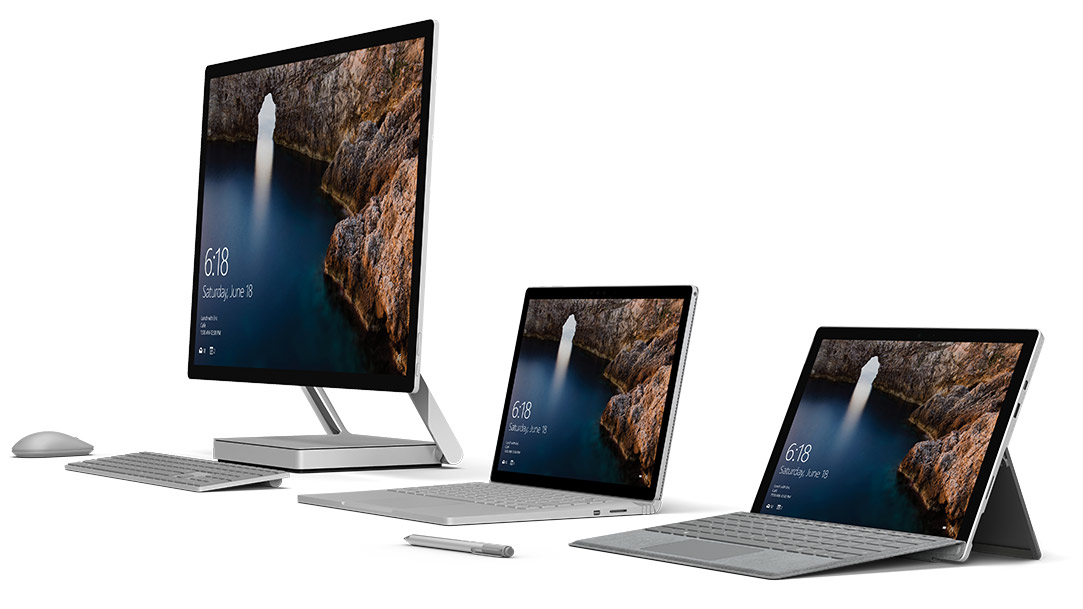Microsoft has steadfastly refused to quit its device efforts. Despite setbacks the company faced in its hardware ambitions – buying Nokia for for $7.2 billion in 2014 and writing off $7.6 billion dollars a year later – the Redmond giant refuses to stay away from the hardware business, and Microsoft Surface underpins the Windows maker’s plan to stay relevant on the manufacturing side of things.
And they have even tasted some success in that regard.
When Satya Nadella took over and changed the company’s focus towards a cloud first mobile first world there was a lot of anxiety over the company’s future plans for the Windows platform. An equally big question was about whether or not the company really wanted to take another shot at improving its practically non-existent market share in a mobile operating system world dominated by Android and iOS.
The answers to those questions were Windows 10 with a Universal Windows Platform, and Surface.
The Microsoft Surface family and the UWP concept are the two wedges keeping the door open for Microsoft’s Windows to re-enter the strongly growing mobile devices world. PC sales have been on the wane for five years running now, and desktops in general are increasingly being concentrated in the enterprise world rather than the consumer one.
Smartphones and tablets are fast replacing desktops in homes, and the trend seems irreversible. In such a world, Windows, which still earns billions of dollars for the company, is looking at a market that is shrinking fast. And with no significant presence in the mobile OS market, that necessarily brings the future growth of Windows – primarily a desktop OS – under the microscope.
While Microsoft’s Continuum efforts aim to blur the difference between devices and create a single Windows experience across all screen sizes, there are still several questions that hang over Microsoft as far as the feasibility of such an ambitious undertaking goes.
The three-pronged problem for Microsoft is to create the devices, the operating system and the bridge between the two. The company already has its focus on making its own devices because that’s the only way it can fully leverage its operating system. Both Surface and Windows 10 have shown that they can do the heavy lifting, and all that remains now is for that bridge to be built. That bridge is what we expect to see at the Mobile World Conference in Barcelona in February 2017 in the form of the “cellular PC” or “Surface Phone” that can run desktop applications using emulation on top of ARM architecture.
So, what’s happening now is that the bridge is being built from both sides. On the OS side, the Continuum effort is attempting to reach over to the devices side. At the devices end, Surface is now reaching out to touch the desktop OS side. When they meet, a new paradigm will have been created, giving Microsoft a huge lead in the space over both Apple as well as Google.
And that’s what Nadella is counting on as his legacy.
On the devices side, the Surface brand is already gaining a fair amount of traction with desktops, laptops and tablets all running Windows 10. The MWC 2017 unveiling will fill in that final gap – smartphones – but Microsoft isn’t going to rush into it like Google did with the Google Pixel and no apparent plans for a device family. Nadella is more focused on slower but deeper penetration that will last much longer.
In the meantime, Microsoft is more keen on establishing the Surface brand as a reliable device family with a strong following. That’s the first step in this strategy.
Interestingly, as Apple’s iPad revenues slide, Microsoft Surface is showing a fair amount of growth.

Microsoft Surface revenues have grown from $672 million in the first quarter of 2016 to $926 million during the first quarter of 2017, a growth of 37.79% year over year. At one billion dollars it is not even worth comparing with the Apples and Lenovos of this world. But for Microsoft, strong double-digit growth is a good validation in an already overcrowded market. And it’s definitely a significant win for Nadella’s long-term plans.

Of course, I wouldn’t dare call Microsoft Surface a roaring success just yet because it’s far too early for that. Apple’s iPad accounts for a figure in excess of $5 billion in quarterly revenues, and 40 million units sold last year. Surface Pro sales are far, far away from hitting those numbers. However, what the company is looking for is not record-breaking numbers, merely strong sequential growth. They know that the other part will come, eventually. At least, that is the hope.
When sales pick up speed this is bound to happen, but Microsoft Surface, though off to a good start, has not yet reached that level. The results of the next three quarters will give us a lot more visibility around how Microsoft’s devices business is growing, and it is extremely important for the company because it will set the tone for its UWP platform, ultimately breathing life into its Windows-powered smartphones of the future.
Thanks for reading our work! Please bookmark 1redDrop.com to keep tabs on the hottest, most happening tech and business news from around the world. On Apple News, please favorite the 1redDrop channel to get us in your news feed.



